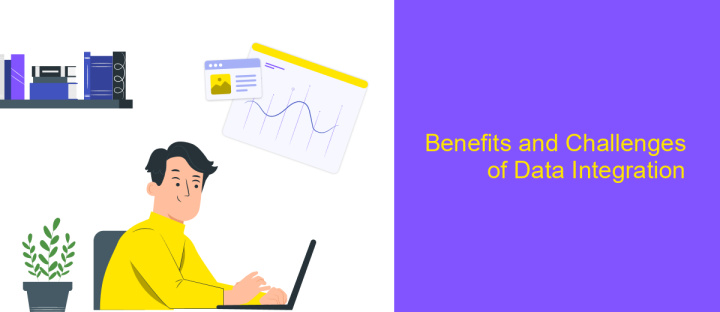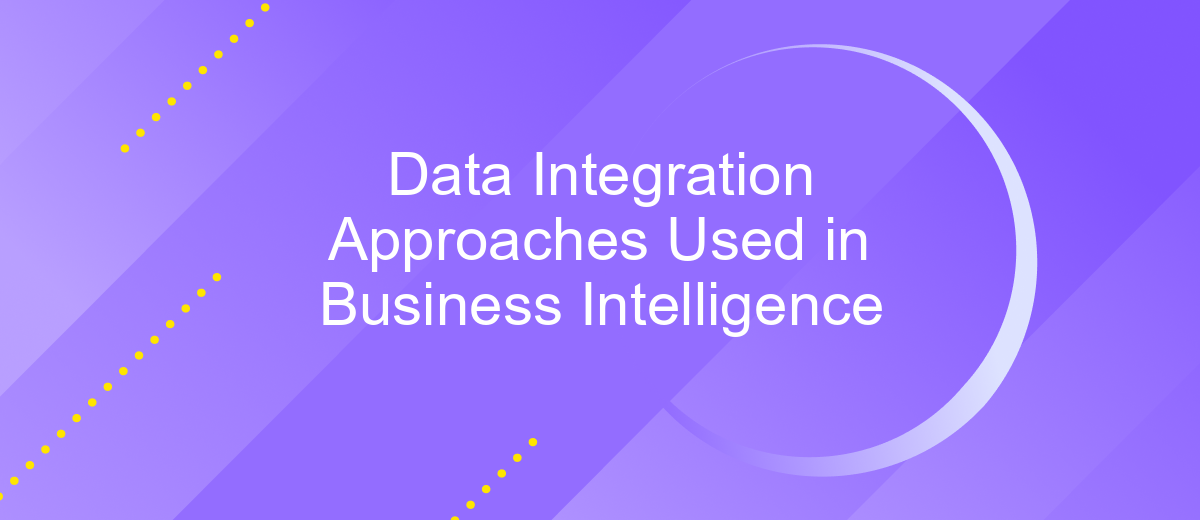Data Integration Approaches Used in Business Intelligence
In today's data-driven world, businesses are inundated with vast amounts of information from various sources. Effective data integration is crucial for transforming this raw data into actionable insights. This article explores the key approaches to data integration used in Business Intelligence (BI), highlighting their significance in enhancing decision-making processes, improving data accuracy, and ensuring seamless data flow across organizational systems.
Understanding Data Integration in Business Intelligence
Data integration is a fundamental aspect of business intelligence (BI) that involves combining data from various sources to provide a unified view. This process is crucial for organizations aiming to make informed decisions based on comprehensive data analysis. Effective data integration ensures consistency, accuracy, and accessibility of data across the enterprise, enabling stakeholders to derive actionable insights. By integrating data, businesses can streamline operations, enhance customer experiences, and drive innovation.
- Data Consolidation: Combining data from different sources into a single database.
- Data Transformation: Converting data into a suitable format for analysis.
- Data Cleansing: Removing inaccuracies and inconsistencies from data sets.
- Data Synchronization: Ensuring data consistency across different systems.
- Data Federation: Accessing data in real-time without moving it to a central repository.
In the context of business intelligence, data integration is not merely about technical processes but also about aligning data strategies with business goals. Organizations must adopt scalable and flexible integration solutions that can adapt to evolving data landscapes. By doing so, they can maintain a competitive edge and respond swiftly to market changes. Ultimately, successful data integration in BI empowers businesses to harness the full potential of their data assets.
Common Data Integration Approaches

Data integration is a critical component of business intelligence, enabling organizations to consolidate data from various sources into a cohesive and accessible format. One common approach is ETL (Extract, Transform, Load), where data is extracted from disparate sources, transformed into a suitable format, and loaded into a data warehouse. This approach ensures that data is clean, consistent, and ready for analysis. Another approach is ELT (Extract, Load, Transform), which loads raw data into the data warehouse first, allowing for transformations to occur later. This can be more efficient for handling large volumes of data and leveraging the processing power of modern data warehouses.
Data virtualization is another approach that allows real-time access to data without the need for physical storage. It provides a unified view of data from different sources, enhancing flexibility and speed. Additionally, tools like ApiX-Drive facilitate seamless data integration by automating workflows and connecting various applications. ApiX-Drive allows businesses to set up integrations without extensive coding, making it easier to manage data flows and ensure that relevant information is available for decision-making. These approaches collectively enhance the ability of businesses to derive meaningful insights from their data assets.
Choosing the Right Data Integration Approach

Choosing the right data integration approach is crucial for the success of business intelligence initiatives. It involves aligning integration methods with business goals, data sources, and technical infrastructure. A well-selected approach ensures seamless data flow, enhances decision-making, and drives operational efficiency.
- ETL (Extract, Transform, Load): Ideal for structured data, ETL processes data in batches, transforming it before loading into a centralized data warehouse.
- ELT (Extract, Load, Transform): Suitable for handling large volumes of data, ELT loads raw data into a data lake and performs transformations as needed.
- Data Virtualization: Offers real-time data access without physical movement, beneficial for dynamic environments with diverse data sources.
- API Integration: Facilitates seamless data exchange between applications, essential for real-time data needs and cloud-based services.
- Streaming Data Integration: Best for real-time analytics, it continuously integrates data from live streams, supporting instant decision-making.
Ultimately, selecting the right approach requires evaluating data volume, velocity, variety, and veracity. Businesses should also consider scalability, cost, and existing IT infrastructure. By aligning these factors, organizations can ensure a robust data integration strategy that supports their business intelligence goals effectively.
Benefits and Challenges of Data Integration

Data integration is a pivotal component of business intelligence, enabling organizations to consolidate data from diverse sources into a unified view. This process enhances decision-making by providing comprehensive insights and improving data accuracy. Through effective data integration, businesses can streamline operations, reduce redundancies, and foster collaboration across departments.
Despite its advantages, data integration poses several challenges. One significant issue is the complexity of merging data from various formats and systems, which can lead to compatibility problems. Additionally, ensuring data quality and consistency during integration is crucial, as discrepancies can result in inaccurate analyses and insights.
- Scalability: Integrating large volumes of data from multiple sources can strain resources and require robust infrastructure.
- Security: Protecting sensitive data during integration processes is essential to prevent unauthorized access and breaches.
- Cost: Implementing and maintaining data integration solutions can be expensive, requiring significant investment in technology and expertise.
Ultimately, while data integration offers substantial benefits for business intelligence, organizations must carefully manage its challenges. By addressing scalability, security, and cost concerns, businesses can harness the full potential of integrated data to drive strategic growth and innovation.
Future Trends in Data Integration for BI
As businesses continue to evolve, data integration for Business Intelligence (BI) is set to embrace several transformative trends. One significant trend is the increasing adoption of AI and machine learning to automate and optimize data integration processes. These technologies enable more efficient data mapping, transformation, and error detection, reducing manual intervention and improving accuracy. Additionally, the rise of cloud-based data integration platforms is facilitating more scalable and flexible solutions, allowing businesses to seamlessly integrate data from various sources in real-time.
Another emerging trend is the focus on self-service integration tools, empowering business users to handle data integration tasks without relying heavily on IT departments. Services like ApiX-Drive are at the forefront of this movement, offering user-friendly interfaces that simplify the integration process. Furthermore, the emphasis on data governance and security will grow, ensuring that integrated data complies with regulatory standards. As these trends unfold, businesses will be better equipped to harness the power of integrated data, driving more informed decision-making and strategic insights.
FAQ
What is data integration in the context of Business Intelligence?
Why is data integration important for businesses?
What are some common approaches to data integration in BI?
How can businesses automate data integration processes?
What challenges might a business face during data integration?
Routine tasks take a lot of time from employees? Do they burn out, do not have enough working day for the main duties and important things? Do you understand that the only way out of this situation in modern realities is automation? Try Apix-Drive for free and make sure that the online connector in 5 minutes of setting up integration will remove a significant part of the routine from your life and free up time for you and your employees.

